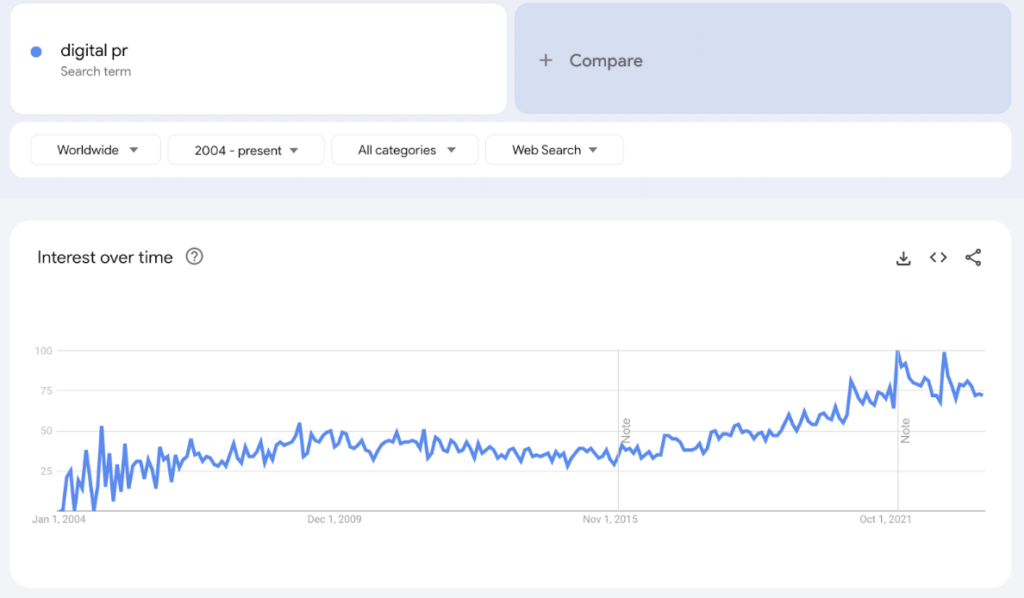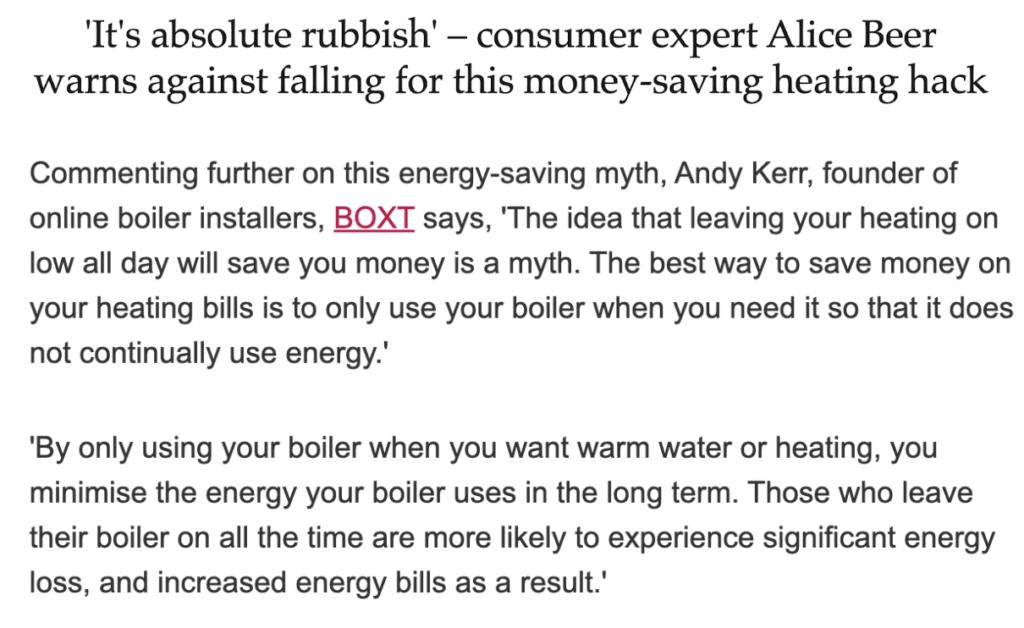Digital PR: What It Is, Why It’s Important & What Success Looks Like
By Amy Irvine
December 7, 2023 • 17 min read

- What is digital PR?
- What is the difference between digital PR and traditional PR?
- Measuring the success of digital PR
- Where digital PR started:
- Common digital PR strategies and tactics
- Why is it essential for digital PR to be part of your SEO strategy?
- The digital PR process: A step-by-step guide
- What does digital PR look like in practice?
- The future of digital PR
In the last 30 days alone*, there have been more than 20K global searches for ‘digital PR’.
The digital PR industry is showing no signs of slowing down, and many brands are continuing to invest in digital PR.

Digital PR isn’t just about building links.
Yes, it’s one part of it, but a good digital PR strategy will also boost a brand’s online authority, awareness, reputation, trust, organic traffic and sales.
It’s also important to recognise that the industry is constantly evolving.
Still, as digital PR professionals, we embrace the change and develop our strategies to keep up with the ever-changing landscape.
*Data from November 1st to 30th, 2023.
What is Digital PR?
Digital PR (digital public relations) is an online marketing strategy combining traditional public relations and digital marketing strategies to secure backlinks back to a site.
At Digitaloft, we secure high-quality links from key publications by creating highly engaging, relevant content and stories which link clearly back to the brand, and we sell these stories to journalists for them to cover.
For the past few years, ‘relevancy’ has been the buzzword in digital PR (and rightly so), and it’s here to stay. In 2023 and beyond, you need to create relevant digital PR strategies incorporating a range of tactics from creative, data-led hero campaigns, reactive and proactive, thought leadership, product PR & more.
What‘s the Difference Between Digital PR and Traditional PR?
Traditional PR has been mentioned a few times throughout this blog post, and as the digital PR industry evolves, the two overlap more and more.
“Public Relations is about reputation – the result of what you do, what you say and what others say about you. Public Relations is the discipline which looks after reputation, with the aim of earning understanding and support and influencing opinion and behaviour.”
Chartered Institute of Public Relations
But what can we take from this when it comes to understanding the relationship between digital and traditional PR?
Traditional PR has always had the primary goal of building brand awareness within and beyond a target audience, whereas the main goal of digital PR is to earn editorial backlinks to boost a brand’s organic growth online.
Traditional tactics focus on pushing out information through TV, print, online publications, radio, leaflets and billboards, whereas with digital PR, our main focus is online publications and websites.
Digital PR has come from applying these more ‘traditional’ PR tactics – building connections, writing press releases, creating stories, and coming up with ideas – to efforts to secure links from key and relevant publications.
Ultimately, traditional and digital PR are both trying to improve and sustain a brand’s reputation. Traditional PR is focused on looking after that reputation both online and offline, whereas digital PR is hyper-focused on looking after that reputation online.
However, when done right, digital PR enables brands to grow well beyond the digital arena.
We’re big believers that any effective digital PR strategy should also look into the broader impact its work is having on a brand.
If we aren’t doing this, we’re ignoring the bigger picture and missing opportunities.
Measuring the Success of Digital PR
To measure the success of your digital PR strategies, you also need to look at the following.

Wider link metrics
As well as reporting on the number of links and DA/DR, you should also be reporting if a link is ‘follow’ or ‘no-follow’, syndicated or non-syndicated and if it’s an affiliate. At Digitaloft, we also report on things such as anchor text and the type of link (e.g. campaign, product or home page) to provide a more detailed picture of the return on investment for our clients.
Types of publications
You should also be looking at the types of publications you’re landing links and coverage on. For example, it can be split into national, regional, and niche. Another great thing to include is the number of dream publications as well!
Outside of just link metrics, it’s also important to look at how your digital PR or link-building strategy impacts your client’s wider organic strategy. For example:
Keyword rankings
If you think that keywords and Google rankings are exclusive to the world of SEO, think again! You should be reporting on how your client’s target keywords are ranking and if they have increased or decreased following your efforts.
We need to remember that digital PR helps to strengthen SEO, digital advertising and social media strategies, all of which use organic search interest insights as a foundation stone when measuring effectiveness and deciding tactics.
Relevant organic traffic
You should also be monitoring your client’s organic traffic to see if it spiked around any of your digital PR activity. To do this, use digital PR tools like Ahrefs, Google Search Console and Google Analytics to report on organic search traffic.
Organic revenue
Organic revenue can definitely be a trickier one to report on, but it’s something that clients always want to know. Find out how much organic revenue your earned links are driving for your clients.
Brand awareness
Brand awareness can be harder to report on, too, but there are various ways you can do this. For example, recording the number of brand mentions, reporting on branded search and also using tools such as BrandWatch to see how many people are talking about your client online all come together to build a picture of a brand’s online presence.
Social engagement
The amount of times your campaign has been shared across social media platforms is a great way to see how much reach your campaign has had. Use tools such as Buzzsumo to find out.
Where Digital PR Started
Digital PR used to be very different from what it is today.
Before the Penguin update in 2012, digital PR, or ‘link building’ as it was called back then, was very much about building spammy, irrelevant links to improve a site’s SEO.
Tactics include guest posting as well as buying links.
After the Penguin update, Google started penalising websites for buying links, and lots of websites saw a massive drop in impact performance. All of the money they had spent buying links went to waste. This was the start of digital PR as we know it today, and at Digitaloft, we’ve been doing ‘digital PR’ before it was even known as that.
But digital PR is constantly evolving. Many of you will remember the early days of digital PR and how the infographic was king. Then there was the start of the creative, data-led or ‘hero’ campaigns, and we had some of our best-performing campaigns to date (in terms of link numbers), such as You Vs The Kardashians for Missy Empire and The Pet Rich List for Compare the Market. It was much easier to secure links and make a campaign go viral back then!
Around 2020, especially during the COVID-19 lockdowns, we saw a rapid rise in reactive PR. This was because, once the lockdown hit, the majority of our digital PR campaigns were no longer relevant to the current news agenda, as consumers spent more and more time reading online publications.
As PRs, we are experts at pivoting, and this was no different – we shifted our digital PR strategies to focus heavily on reactives so we could push out relevant content during the pandemic – from DIY eyebrow tutorials to expert guides on how to cut your boyfriend’s hair, to how to cope working remotely – we covered it all!
Fast forward to today, and we’re still utilising a range of different digital PR tactics, including the ‘hero’ digital PR campaign. Reactive PR and product PR were previously seen as more ‘traditional’ PR tactics. However, these tactics are some of the fundamental pillars of digital PR today, alongside campaigns, stunts, thought leadership, and more.
Common Digital PR Strategies and Tactics
As mentioned, there are lots of different tactics that come together to form a wider digital PR strategy. Let’s dive into what each of these is a little bit further.

Data-driven digital PR campaigns
These are campaigns that utilise public, internal, or survey data to create a range of stories that hook back to the client. There are so many ways to develop standout stories with data and the right data-driven hero campaigns that can position you as an authoritative figure in your field, increase brand awareness and earn relevant backlinks back to your site.
Creative digital PR campaigns
Creative hero campaigns are very similar to the above tactic. However, they don’t rely on data. These campaigns will be BIG ideas with real wow-factor, such as shocking stunts, famous faces, humour and so on.
Reactive PR
Reactive PR is when you ‘piggyback’ on breaking news stories. Originally known as a more ‘traditional’ tactic, reactive PR is amazing for getting your client out there, reacting to relevant news and cementing their place in their industry as a leading voice.
Proactive PR
Proactive PR is very similar to reactive PR but involves a little more planning and a longer-term strategy across a whole year. For example, you can plan for recurring events such as Christmas, Halloween, Black Friday and Valentine’s Day. It’s also a good idea to build up a bank of expert comments from your client that you can push out to the press when a relevant news story crops up.
Because of the extra time a digital PR agency will have to get angles and resources prepped for proactive opportunities, they can sometimes involve more effort and forethought. My teams often begin working several months in advance of popular calendar events to create an ultra-strong digital PR campaign that will stand the best chance of securing high-quality backlinks on relevant websites.
Product PR
There are a few different ways you can do product PR, such as creating stories around a key product or category on a site, making sure your client’s products are included in reviews, round-ups and gift guides, and launching a new product to the press to generate interest and stories.
Thought leadership
Thought leadership is an excellent way of positioning your clients as experts in their field. You can do this by pushing out consistent insight from key spokespeople. Thought leadership can earn you links in national publications, but it’s also great for industry-specific press too.
Statistic pages
A statistic page is an optimised piece of content which outlines all of the key statistics about a certain topic. Once statistic pages rank high in the SERPS, they will naturally earn relevant links back to them, as people searching for statistics will come across your page and cite it as a source.
Case studies
Journalists love real-life stories. If a case study is strong enough, it can create a story by itself. However, case studies are also great for giving a fresh hook to wider campaigns too!
Why Is It Essential for Digital PR to be Part of Your SEO Strategy?
At Digitaloft, we are experts at connecting the dots between SEO, content marketing and digital PR, and we know that these are the three main organic growth drivers. You need content to build your on-page authority and links to build your off-page authority, which should all be underpinned by sound technical SEO.
Google’s John Mueller has highlighted how digital PR is “just as critical as technical SEO”, as the two disciplines work hand-in-hand to boost brand awareness online and drive organic website traffic through search engines.

Digital PR lands you high-authority, high-quality backlinks by creating engaging content and stories journalists want to cover. These links serve as mission-critical markers of trustworthiness, with other websites recognising your brand and its content as reliable sources of information.
The best digital PR strategies:
- Earn links that are actually clicked on by your next customer, driving traffic to your site and can even result in direct sales.
- Earn links from sites your target audience visits, building brand awareness and driving higher branded search.
- Earns links from within content that positions you as a voice in your sector, building topical authority.

Those links pointing back to your site can significantly impact your organic performance because Google sees them as a sign of trust.
The more backlinks you have, the more Google trusts you. However, those links must be from high-quality, authoritative and relevant sites.
Gone are the days of building (and buying) lots of irrelevant, spammy links back to your site. If you are still buying links, you need to reinvest that budget into digital PR now.
But digital PR is so much more than just links. If you’re just reporting on the number of links and the DR of those links, then you are ignoring the broader impact.
The Digital PR Process: A Step-by-Step Guide
The digital PR industry is fast-paced and full of creativity. It’s a space where having the freedom to break the rules and push boundaries isn’t just allowed but encouraged.
But, in my experience, the most successful digital PR efforts start with solid, process-led foundations that use tried-and-tested methods to generate results. Let’s take a look at the process that my teams use in more detail.
Step 1 – Getting key information from the client.
To kickstart the digital PR process, you need to get certain information from the client. This includes things like keyword research, target pages, dream publications, target audience overviews and broader business objectives. If possible, try to get your eyes on their digital marketing strategy, too, as your digital PR strategy and campaigns will sit inside this.
Some goals businesses typically want to achieve are:
- Increase brand awareness
- Increase website traffic and conversions
- Lead generation
- Manage brand image online
- Promote product launches
Step 2 – Ideation stations.
From here, we go into ideation, which involves looking into trending topics, analysing the client’s competitors and brainstorming potential campaign ideas. We always start with solo ideation and then have a session with the whole team to develop those ideas into digital PR hero concepts and reactives.
Read our full guide to get more inspiration for your digital PR campaigns.
Step 3 – Creating top-quality content.
After solo and group ideation, it’s time to put our brainstorming into action. Our in-house design and research teams begin creating assets for the hero digital PR campaign concepts that will sit on client websites.
It’s not just on-page content, though; reactive press releases are an essential part of any digital PR strategy, too. We draft up banks of expert comments on behalf of our clients to respond to reactive opportunities with lightning speed.
Step 4 – Outreaching our million-dollar ideas.
Once you have everything signed off, it’s time to research your media list. Remember, less is more when building a media list, and you need to do your research and ensure every journalist is relevant to the story you’re outreaching.
Step 5 – Pitch perfect.
Then, it’s time to craft the perfect pitch! Your pitch needs to sell the story to the journalist, and it should include everything the journalist needs to write up the story, for example, images, an expert quote and relevant links.
If you don’t get the results you first expected, then make sure you follow up with your journalists, as they may have just missed your email (they receive hundreds of press releases every day, so yours may get lost).

It’s also vital to consistently monitor your links and coverage and ensure you’re getting the best results possible. For example, you can A/B test headlines to see the preferred headline formats.
What Does Digital PR Look Like in Practice?
So, we know what digital PR aims to do in terms of boosting organic search traffic and brand perception amongst a target audience, but how does it achieve this in practice? Let’s take a look at some recent campaigns the teams here at Digitaloft have produced.
This is an example of a recent data-led hero digital PR campaign we created for our US-based car subscription client, FINN. This campaign revealed the cheapest and most expensive states for car insurance and secured 25 links from high-authority publications in the states, including the Washington Post. You can read our case study on FINN here.

We also work with BOXT, a leading UK-based provider of home heating and cooling solutions (that’s boilers and air conditioning systems, in layperson’s terms). Since September, we’ve launched several reactive pieces for them and secured over 200 links from national, regional, lifestyle, and home publications, cementing them as authoritative figures in the heating space.

Here is an example of some recent product PR for our client, Christmas Tree World.
Q4 is the most critical period for them, so we ramp up our product PR efforts from September onwards, taking the focus away from creating content for SEO growth and pivoting resources towards link building. We absolutely love product PR at Digitaloft, as it has the power to build brand awareness, increase traffic and even achieve product sell-outs!


The Future of Digital PR
As we head into 2024, it’s important to reevaluate our digital PR strategies and ensure we are delivering the best work for our clients.
There is some talk about the ‘hero’ digital PR campaign being dead. However, we disagree entirely. Large-scale, creative, and data-led digital PR campaigns definitely still have their place in the industry and can deliver really excellent results if done right.
However, it’s more important than ever to have that clear hook back to the client, and the idea also needs to be relevant and position you as a voice within your industry.
Reactive and proactive PR are likely to increase in popularity even more. Reactive PR is becoming the favourite tactic in the industry more and more, as it utilises fewer resources and can have seriously impressive results.
Reactive PR is also great for pitching expert insights from your subject matter experts and can really help validate their expertise through articles and leverage your brand’s reputation. It not only secures high-quality, relevant links, but it also positions you as an expert in your field and is perfect for demonstrating E-E-A-T.
Google’s recent Helpful Content Update means that digital PR has a huge role to play from an E-E-A-T perspective, as it increases brand awareness, establishes your people as subject matter experts and builds robust topical authority. Read our full blog post to learn more about the links between digital PR and E-E-A-T.
Relevancy will continue to be one of the most important metrics for 2024. Your digital PR ideas for 2024 need to…
- Have a relevant hook back to your brand
- Be relevant to your target audience’s interests
- Be relevant for the keywords you want to rank for
- Have relevance to the here and now to cut through the noise for journalists
- Land links on relevant publications for your brand
We are also going to have to continue being strategic with where we are securing those links on our client’s websites. For example, we need to prioritise earning links into specific product or category pages to really move the needle from an organic growth perspective.
It’s also crucial to remember that digital PR isn’t a one-size-fits-all, and what works for one client might not work for another. There are many different strategies and approaches, and it’s important to have the right plan in place for your clients to drive organic growth.











